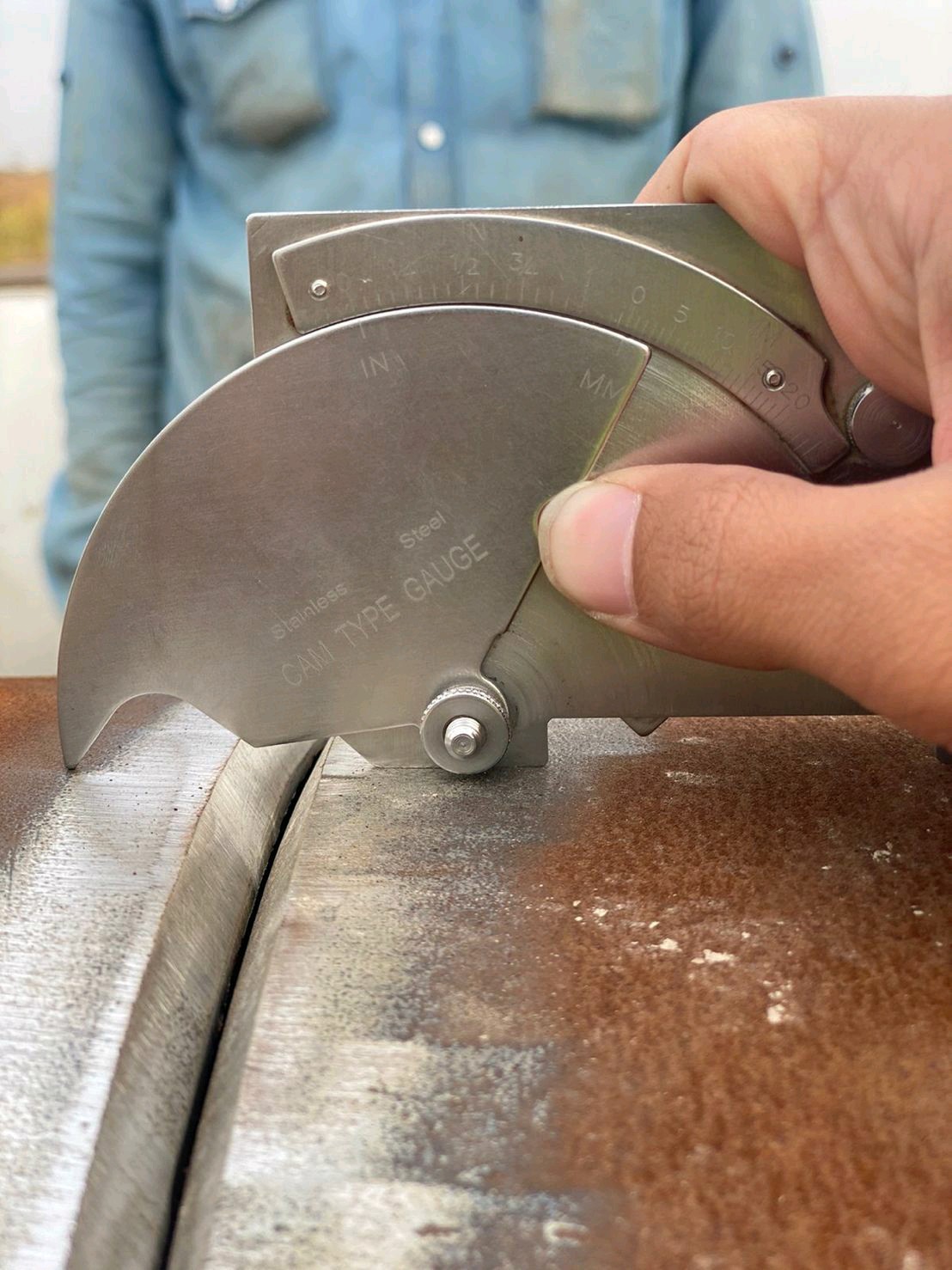The Significance of Thorough Welding Inspection in Industrial Applications
In the realm of industrial applications, the relevance of precise welding evaluation can not be overemphasized. It plays a crucial duty in making sure the structural honesty and durability of welded parts. Advanced non-destructive screening methods allow for the very early detection of potential flaws, such as cracks and insufficient combination, which, if left unchecked, might cause devastating failures. Adherence to rigorous market standards not just guarantees high quality but likewise develops client self-confidence. As we explore the complex benefits of thorough welding assessments, one should take into consideration the broader ramifications on safety and security, dependability, and cost-effectiveness in commercial operations.
Enhancing Structural Honesty
When it concerns welding assessment in commercial applications, boosting architectural honesty is paramount. The main goal of welding assessment is to make certain that the welds can birthing the expected loads and anxieties they will certainly come across in service. This involves a detailed analysis of the welds' measurements, placement, and total top quality, ensuring they meet the defined codes and requirements. Accurate evaluation techniques, such as visual inspection, ultrasonic testing, and radiographic screening, are essential in identifying issues that could endanger the framework's security and performance - Welding Inspection Madison.
The significance of keeping architectural stability in bonded frameworks can not be overstated. Inadequately carried out welds can lead to catastrophic failings, causing costly repair work, downtime, and also endangerment of human lives. Examiners play a critical function in the lifecycle of industrial elements, giving guarantee that the welding process supplies the desired toughness and toughness.
Furthermore, advanced modern technologies, such as phased array ultrasonic screening and electronic radiography, offer improved capabilities in detecting prospective weak points, permitting restorative actions before concerns escalate. By prioritizing the stability of welds via precise examination, industries can make sure functional efficiency and extend the durability of their facilities.
Recognizing Welding Issues
Identifying welding problems is a vital facet of guaranteeing the security and integrity of bonded frameworks. Typical welding issues consist of porosity, splits, insufficient combination, and undercutting.

Knowledgeable assessors use both aesthetic evaluation and progressed non-destructive screening (NDT) methods, such as ultrasonic or radiographic testing, to spot these defects. The timely recognition and rectification of welding flaws are imperative to keep the architectural integrity and longevity of industrial parts.
Guaranteeing Conformity Specifications
Compliance with well established criteria, such as those given by the American Welding Culture (AWS) and the International Company for Standardization (ISO), ensures that welds satisfy minimum safety and security and top quality needs. These requirements include a large range of standards, including material specifications, welding treatments, and certification of welders.
Routine audits and assessments are necessary in verifying conformity. Assessors should have an extensive understanding of the appropriate standards and be experienced at using various non-destructive testing (NDT) techniques to review weld quality. By guaranteeing that welding methods Clicking Here straighten with compliance criteria, companies mitigate the threat of non-conformity, which can result in legal obligations and security threats.
Additionally, keeping conformity not only safeguards architectural honesty but likewise improves a firm's credibility in the industry. Stakeholders and clients are more most likely to trust companies that regularly show a dedication to quality and safety via extensive conformity. Hence, guaranteeing compliance requirements is a crucial part in the successful application of welding in industrial applications.
Reducing Upkeep Costs

The application of innovative non-destructive testing (NDT) techniques, consisting of ultrasonic, radiographic, and magnetic particle inspections, boosts the capability to identify subsurface flaws without jeopardizing the architectural integrity of components. By using these strategies, markets can dramatically expand the solution life of their tools, minimizing downtime and the associated economic problem of upkeep activities.
Moreover, a durable welding evaluation regimen supports the optimization of maintenance timetables, changing from reactive to anticipating upkeep methods. This proactive method not just cuts unanticipated failings yet additionally streamlines source allowance, guaranteeing that upkeep initiatives are concentrated and efficient. Inevitably, the investment in rigorous welding inspection is balanced out by the substantial cost savings recognized via lowered upkeep needs, adding favorably to the overall functional effectiveness of industrial business.
Improving Safety Measures
Welding assessment plays a crucial function in this context, as it ensures that all connections and joints meet rigorous security requirements. Comprehensive examinations help determine defects such as splits, porosity, or insufficient blend that can compromise structural integrity.
To improve precaution, embracing sophisticated non-destructive screening (NDT) strategies is crucial. Approaches like ultrasonic testing, radiographic screening, and magnetic bit examination enable thorough assessment without harming the structure. These innovations enable assessors to spot covert defects early in the building procedure, promoting prompt rehabilitative actions. Furthermore, implementing a robust moved here quality assurance system that consists of regular training for examiners and welders makes certain adherence to established security criteria.
Finally, cultivating a society of security within the company emphasizes the importance of detailed welding examinations. Encouraging open communication and partnership among examiners, designers, and welders contributes to a shared commitment to security excellence. Welding Inspection Madison. In doing so, sectors can protect their procedures, safeguard employees, and preserve public trust

Conclusion
Thorough welding examination is important in commercial applications, significantly boosting architectural stability and reliability. Inevitably, the attentive execution of welding inspections plays a crucial role in preserving operational performance and security in commercial settings.
As we explore the complex advantages of diligent welding evaluations, one have to think about the wider ramifications on safety and security, reliability, and cost-effectiveness in industrial procedures.
The primary goal of welding inspection is to make certain that the welds are qualified of bearing the anticipated loads and anxieties they will certainly run into in solution. Effective welding examination plays an essential duty in reducing these costs by making sure the integrity and durability of welds, therefore mitigating the threat of early failings.Complete welding evaluation is essential in industrial applications, substantially enhancing structural honesty and integrity. Eventually, the attentive execution of see this welding inspections plays a critical role in keeping operational effectiveness and security in commercial setups.